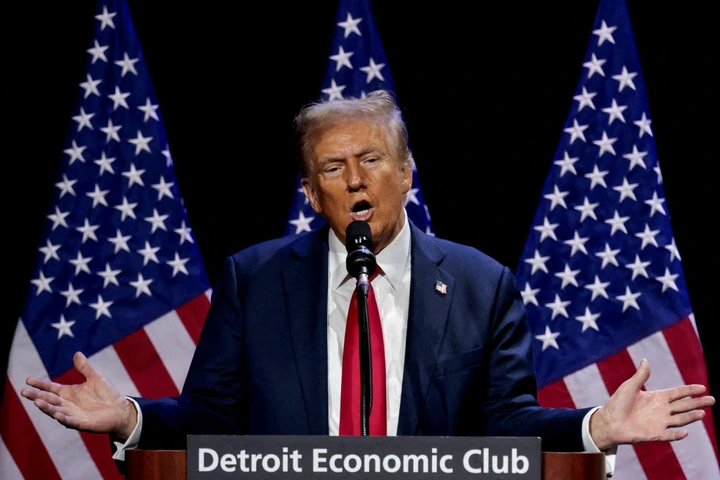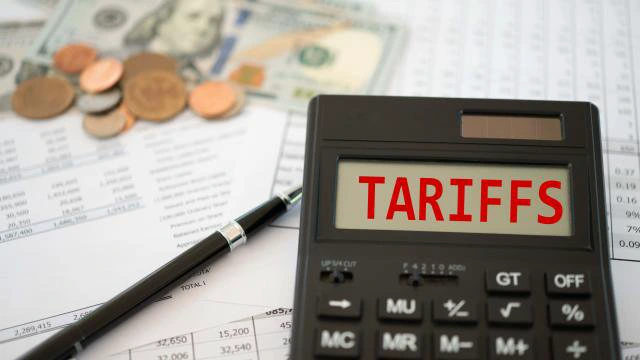
View pictures in App save up to 80% data.

View pictures in App save up to 80% data.
During the first month after Election Day in November, the S&P (^GSPC) stock index rose a nifty 5.3%. Investors cheered incoming President Donald Trump, who promised fiscal stimulus in the form of tax cuts, plus business-friendly deregulation and other measures likely to juice corporate profits.
Since Dec. 6, however, the S&P 500 has dropped by 4% as investors worry about Trump’s “America first” agenda. The tariffs Trump wants to impose on imports would push prices up, and Trump’s plan to deport migrant workers could push labor costs higher. That’s causing new jitters about a second wave of inflation just as the first wave, which peaked in 2022, seemed to be fading.
The markets could respond positively to Trump's inauguration on January 20, as it will conclude a period of 10 weeks filled with uncertainty regarding his policies and begin to shed light on his intended actions. However, the markets have already provided some important signals that Trump should carefully consider.
In their 2025 outlook, Citi economists recently noted, “Trump’s policies involve a complex combination of both positive and negative supply and demand shocks. Ultimately, the uncertainties linked to Trump’s policies are considerable.”
Uncertainty is something that markets despise, and at this moment, they find themselves inundated with it.
An economic uncertainty index maintained by economists Scott Baker, Nicholas Bloom, and Steven Davis jumped from 109 in October to 225 in November — the highest level since 2022. In December, it fell to 215, still far above average levels.
In a video analysis released on January 12, Tom Lee from the investment firm Fundstrat remarked, “The year 2025 has been quite chaotic. We are facing policy uncertainties from the new administration in the White House. The most apparent issues include tariffs and deportations.”
The Federal Reserve is also feeling the pressure. The minutes from the December meeting disclosed that “all participants assessed that there was a heightened level of uncertainty regarding the extent, timing, and economic impact of possible policy changes related to foreign trade and immigration.”
If investors and policymakers are confused, it might be because Trump and his team are sending mixed signals. Some Trump advisers are fueling media reports that Trump is paring back his tariff plans. Trump himself refuted that in a social media post. Wall Street is splitting into two camps: one that expects minimal disruption to trade and one that expects a lot more.
The markets are reflecting a few particular worries.
One concern is that the tariffs imposed by Trump will lead to increased prices and trigger a notable rise in inflation. According to the most recent monthly survey conducted by the University of Michigan, consumer expectations regarding future inflation have surged, likely influenced by reports surrounding the new Trump tariffs. "Consumers are increasingly apprehensive about the potential stagflationary effects of President-elect Donald Trump’s proposed policies," noted Capital Economics in an analysis dated January 10.
Investors appear to echo those worries, which could clarify the atypical fluctuations in interest rates.

View pictures in App save up to 80% data.
Since September of last year, the Federal Reserve has reduced short-term interest rates by one full percentage point. In contrast, the yield on the 10-year Treasury bond has increased by just over a full percentage point during the same period, creating a notable and unusual disparity.
In a January 13 analysis, Moody’s Analytics noted that "Markets might be adjusting to a future characterized by increased volatility, rising inflation, and higher levels of debt."
If there’s a resurgence of inflation, the Fed would have to end the rate-cutting cycle it began just four months ago. Many investors now think that is likely to happen. The CME Group’s FedWatch tool shows markets pricing in higher short-term rates since Trump got elected in November, and especially since early January.
Trump isn't the sole consideration. A robust jobs report for December indicated that the economy is performing strongly, suggesting that additional rate cuts may not be necessary. However, this positive news is overshadowed by concerns regarding Trump's potential to ignite new inflation.
Increased interest rates influence the stock market in several ways. As fixed-income rates rise, bonds gain appeal compared to stocks, prompting some investors to shift their investments from stocks to bonds. Additionally, higher interest rates can reduce corporate profits because the cost of borrowing increases for businesses, potentially leading to a decline in stock prices.
Once Trump assumes office, he has the potential to reshape the conversation surrounding trade and immigration. For example, if he suggests possible reductions in tariffs on imports from China, Mexico, Canada, and other trading partners, it could signal a shift in his approach. Additionally, by narrowing deportation efforts to focus on particular groups, like convicted criminals, he may convey a message that he is not targeting the workforce. Despite the uncertainty, some investors maintain an optimistic outlook on the investment landscape under Trump, believing that his rhetoric may be more alarming than his actual policies.
However, it might take some time for the haze surrounding Trump to dissipate, especially since he may prefer to use threats of tariffs and deportations as bargaining chips in different negotiations that could extend over several months. As a result, he may not reveal his intentions immediately. What the markets are signaling to Trump is the importance of steering clear of any inflationary measures.
They haven't disclosed how much patience they're prepared to exercise.